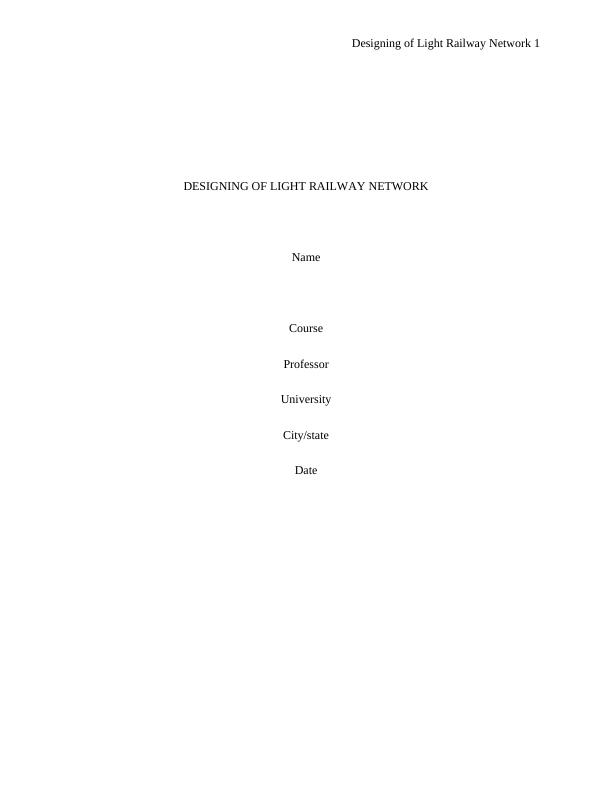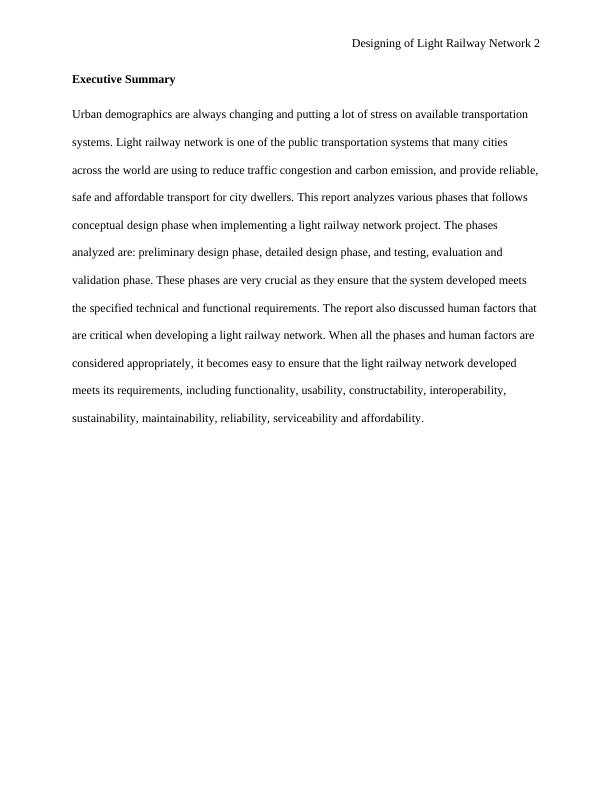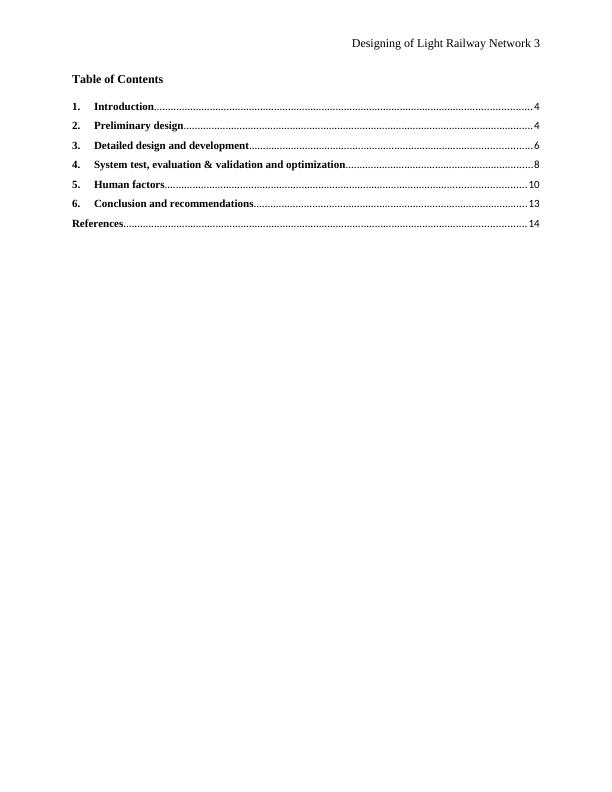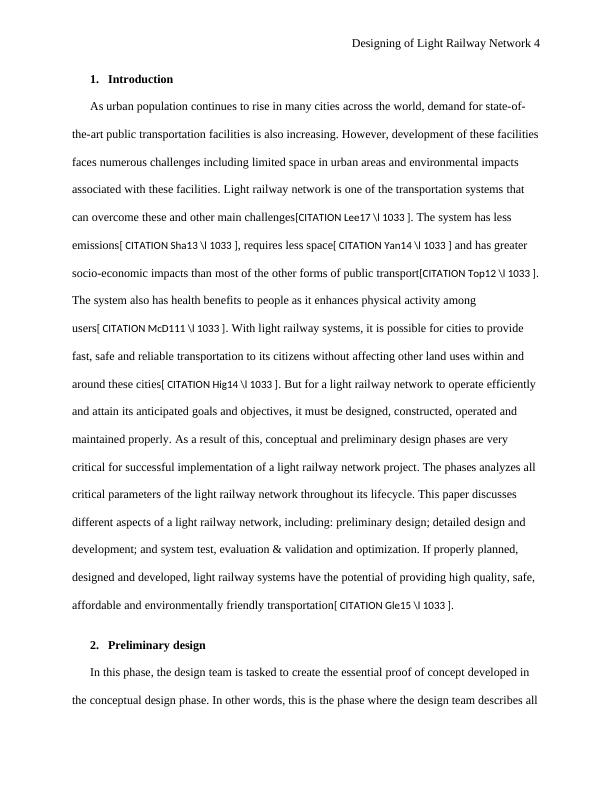Report on Designing of Light Railway Network
Added on 2020-04-01
15 Pages3858 Words51 Views
Designing of Light Railway Network 1DESIGNING OF LIGHT RAILWAY NETWORKNameCourseProfessorUniversityCity/stateDate

Designing of Light Railway Network 2Executive SummaryUrban demographics are always changing and putting a lot of stress on available transportation systems. Light railway network is one of the public transportation systems that many cities across the world are using to reduce traffic congestion and carbon emission, and provide reliable,safe and affordable transport for city dwellers. This report analyzes various phases that follows conceptual design phase when implementing a light railway network project. The phases analyzed are: preliminary design phase, detailed design phase, and testing, evaluation and validation phase. These phases are very crucial as they ensure that the system developed meets the specified technical and functional requirements. The report also discussed human factors that are critical when developing a light railway network. When all the phases and human factors are considered appropriately, it becomes easy to ensure that the light railway network developed meets its requirements, including functionality, usability, constructability, interoperability, sustainability, maintainability, reliability, serviceability and affordability.

Designing of Light Railway Network 3Table of Contents1.Introduction.......................................................................................................................................42.Preliminary design.............................................................................................................................43.Detailed design and development.....................................................................................................64.System test, evaluation & validation and optimization...................................................................85.Human factors.................................................................................................................................106.Conclusion and recommendations..................................................................................................13References................................................................................................................................................14

Designing of Light Railway Network 41.Introduction As urban population continues to rise in many cities across the world, demand for state-of-the-art public transportation facilities is also increasing. However, development of these facilitiesfaces numerous challenges including limited space in urban areas and environmental impacts associated with these facilities. Light railway network is one of the transportation systems that can overcome these and other main challenges[CITATION Lee17 \l 1033 ]. The system has less emissions[ CITATION Sha13 \l 1033 ], requires less space[ CITATION Yan14 \l 1033 ]and has greater socio-economic impacts than most of the other forms of public transport[CITATION Top12 \l 1033 ].The system also has health benefits to people as it enhances physical activity among users[ CITATION McD111 \l 1033 ]. With light railway systems, it is possible for cities to provide fast, safe and reliable transportation to its citizens without affecting other land uses within and around these cities[ CITATION Hig14 \l 1033 ]. But for a light railway network to operate efficiently and attain its anticipated goals and objectives, it must be designed, constructed, operated and maintained properly. As a result of this, conceptual and preliminary design phases are very critical for successful implementation of a light railway network project. The phases analyzes all critical parameters of the light railway network throughout its lifecycle. This paper discusses different aspects of a light railway network, including: preliminary design; detailed design and development; and system test, evaluation & validation and optimization. If properly planned, designed and developed, light railway systems have the potential of providing high quality, safe, affordable and environmentally friendly transportation[ CITATION Gle15 \l 1033 ].2.Preliminary designIn this phase, the design team is tasked to create the essential proof of concept developed in the conceptual design phase. In other words, this is the phase where the design team describes all

End of preview
Want to access all the pages? Upload your documents or become a member.
Related Documents
Designing a Light Rail Network for a City 14 DESIGNING A LIGHT RAIL NETWORK FOR A CITYlg...
|14
|3406
|136
LIGHT RAIL TRANSIT FOR THE CITY OF BRISBANElg...
|13
|3365
|212
Conceptual Design Phase of Gold Coast Light Railway Systemlg...
|12
|2760
|61
Light Rail in Manchester City | Assignmentlg...
|14
|3645
|30
System Engineering and Analysis for Development of the Network of Light Rail Transitlg...
|14
|3689
|491
Light Rail Network - PDFlg...
|15
|3436
|111
